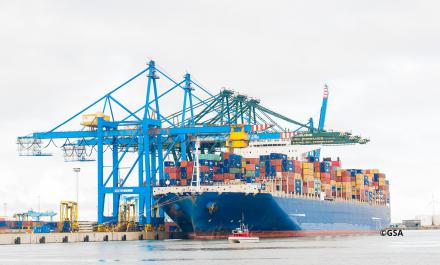The widespread uptake of GNSS in commercial shipping has raised the need for common performance, reliability and resilience standards. With this in mind, the European GNSS Agency (GSA) and the Joint Research Centre (JRC) are launching a test campaign to help manufacturers with the implementation of Galileo in maritime shipborne receivers while checking compliance with standards in the International Maritime Organisation (IMO) and the International Electrotechnical Commission (IEC).
GNSS has radically changed maritime navigation.  Whether it is on board the largest super-tankers and container ships or on small leisure craft using inexpensive handsets, GNSS has become the main source of position and timing information. However, this has raised the need for common standards for performance, reliability and resilience across and within constellations.
Whether it is on board the largest super-tankers and container ships or on small leisure craft using inexpensive handsets, GNSS has become the main source of position and timing information. However, this has raised the need for common standards for performance, reliability and resilience across and within constellations.
The susceptibility of the GNSS signal to interruptions in the availability of any given constellation means that the ability of receivers to process signals from more than one constellation needs to be assessed. GNSS receivers in the maritime domain are also vulnerable to interference, creating the need for mitigation measures such as GNSS integrity warning monitoring and complementary back-up navigation systems.
IMO standards
The International Maritime Organisation (IMO) has published performance standards for multi-system shipborne receivers, which highlight the need to adopt the new GNSS systems, their space-based and terrestrial-based augmentations, as well as non-GNSS based terrestrial PNT.
Read this: H2H – leveraging EGNSS for safer maritime navigation
In this context, and to facilitate the successful market uptake of the EU GNSS programmes in the maritime domain, the GSA in collaboration with the JRC, the European Commission’s in-house science service, is launching a testing campaign on Galileo-enabled ship-borne GNSS receivers.
This test campaign aims to assess both the correct implementation of Galileo in the receivers through targeted tests with a GNSS simulator and/or live GNSS signals, and the consistency of the performance requirements set for Galileo in the maritime domain.
Added value for manufacturers
The testing campaign is targeted at maritime receiver manufacturers looking for independent assessment of Galileo implementation into their products and assistance with any issues linked to this implementation.
In order to assess the correct implementation of Galileo, the tested receivers should have the capacity to enable and disable specific GNSS constellations and be able to function in Galileo-only mode. During the execution of the tests the receivers should also be able to provide information on position, course over ground (COG), speed over ground (SOG), time, and any indications and warnings.
Manufacturers stand to benefit from the fact that the tests will be independent – the GSA/JRC will conduct neutral test cases and provide objective results. These test cases will also be flexible, and can be modified depending on the manufacturer's needs. The campaign is also completely free of cost to the manufacturers. It aims is to support the industry in the implementation of Galileo in shipborne receivers. Based on the testing, the manufacturer will receive a confidential comparative analysis of the results with respect to the average behaviour.
Timeframe
The testing campaign is planned to start in the fourth quarter of 2018 and will continue through 2019. The tests should not exceed four months per model and the duration of the whole test campaign will depend on the number of models tested.
How to apply
Interested shipborne receiver manufacturers and AIS Class A manufacturers are invited to send an email to market@gsa.europa.eu, with the subject Galileo testing campaign for shipborne receivers, indicating their interest in participating. The call for participation is continuously open.
Media note: This feature can be republished without charge provided the European GNSS Agency (GSA) is acknowledged as the source at the top or the bottom of the story. You must request permission before you use any of the photographs on the site. If you republish, we would be grateful if you could link back to the GSA website (http://www.gsa.europa.eu).